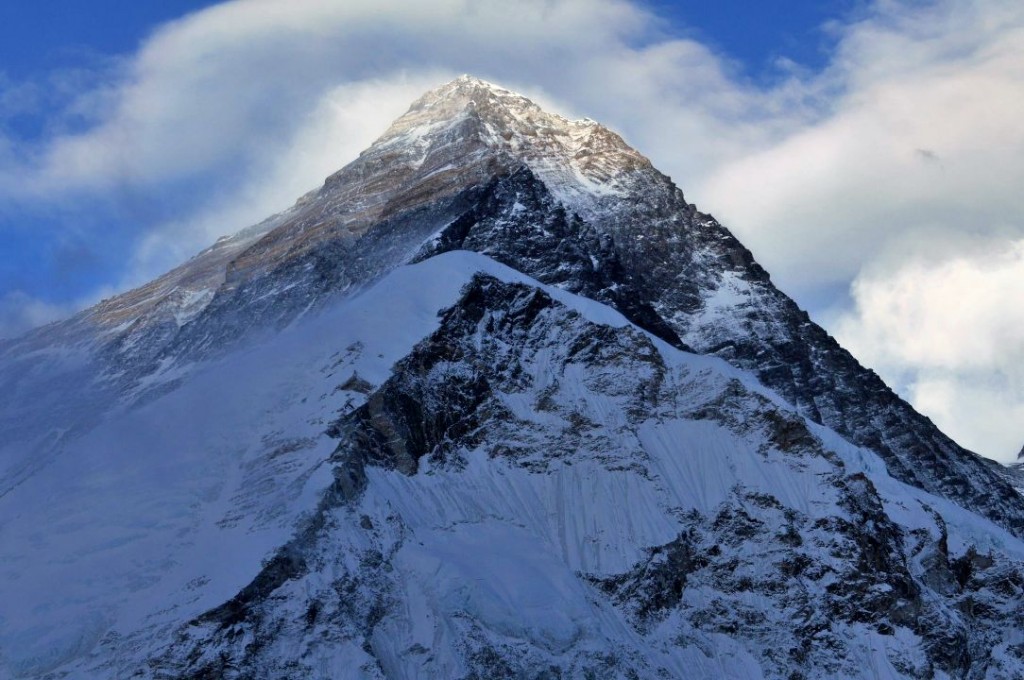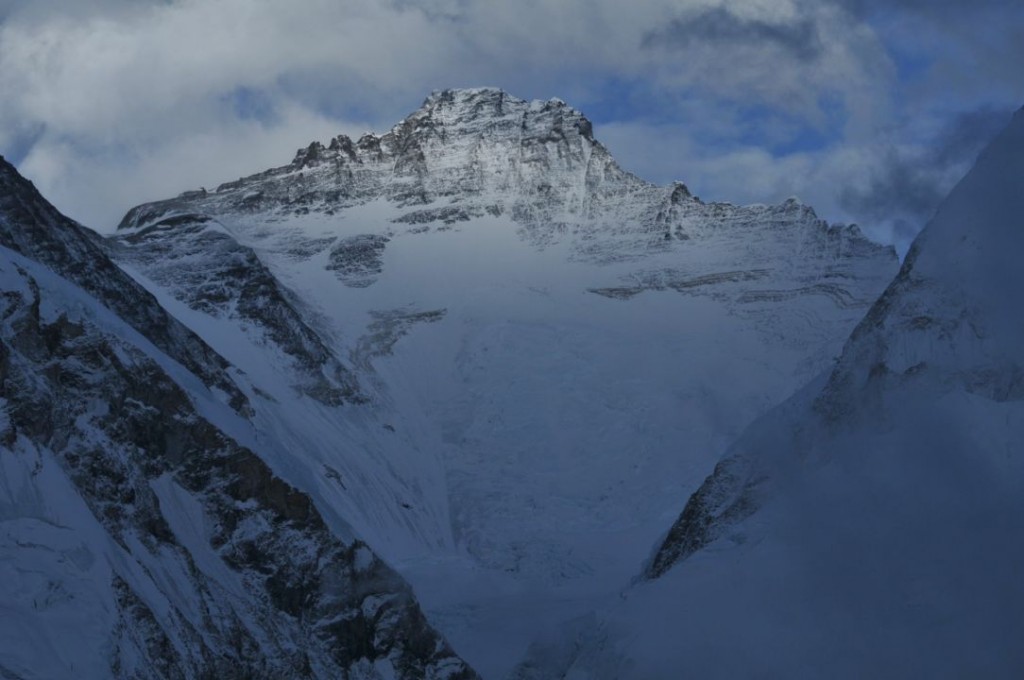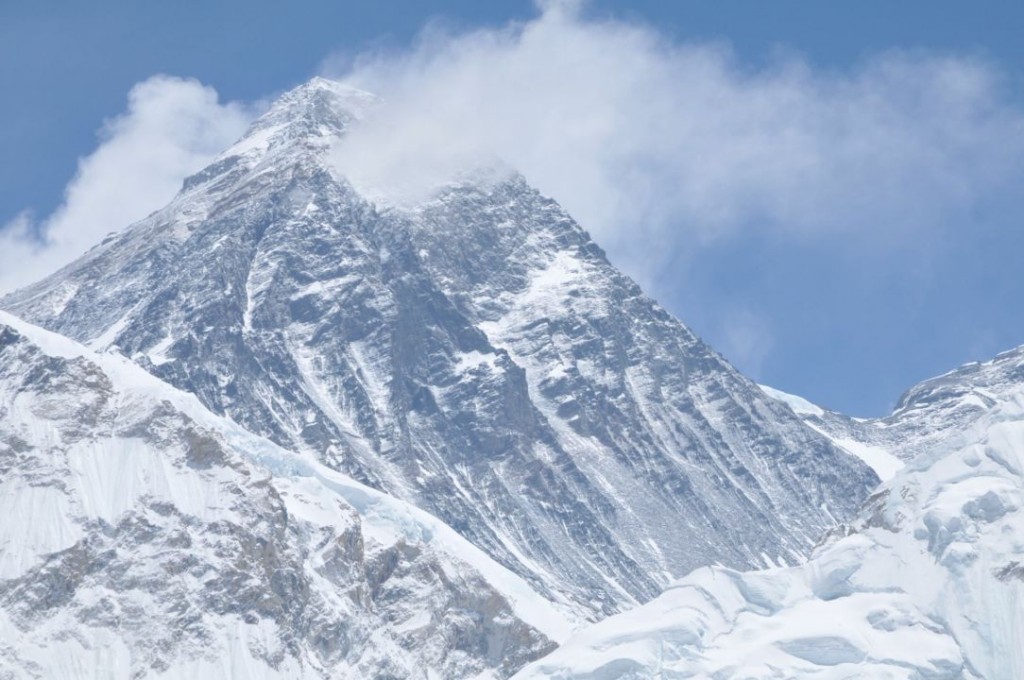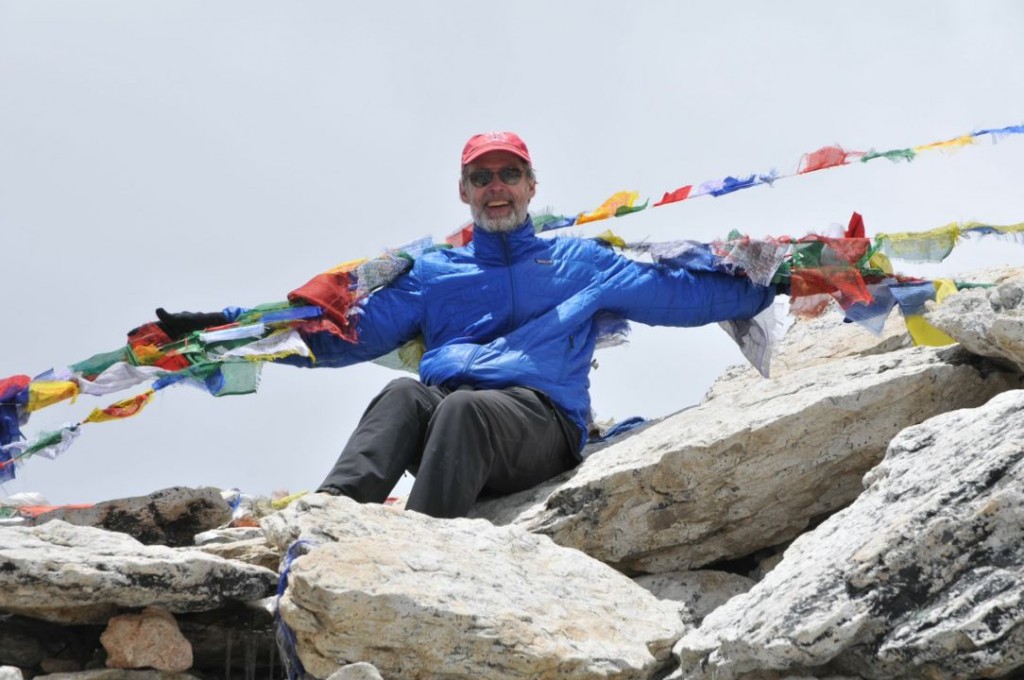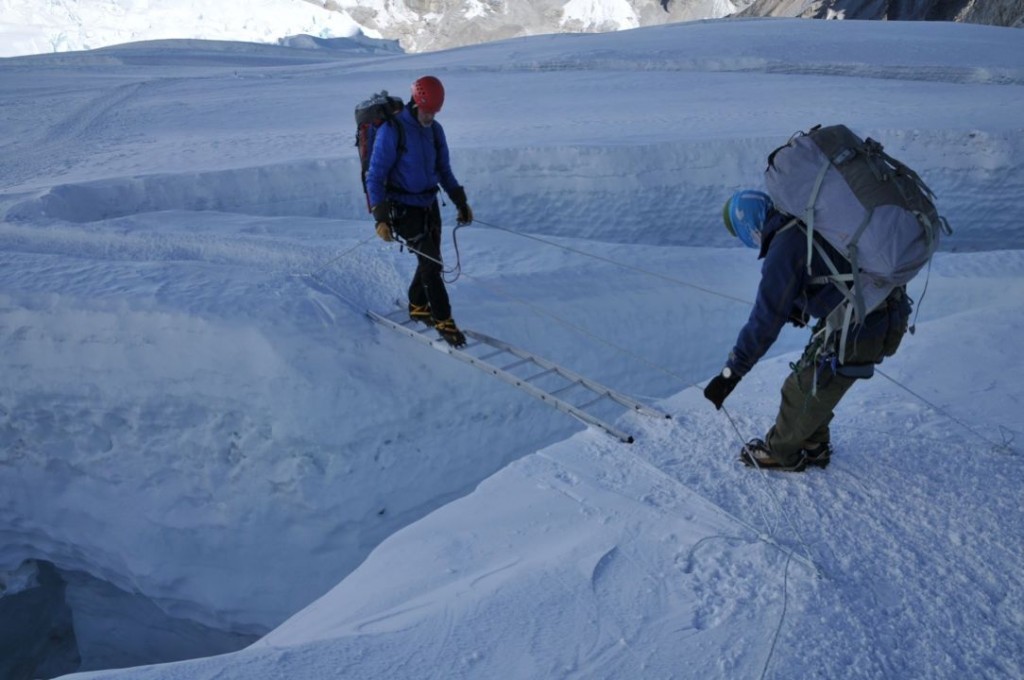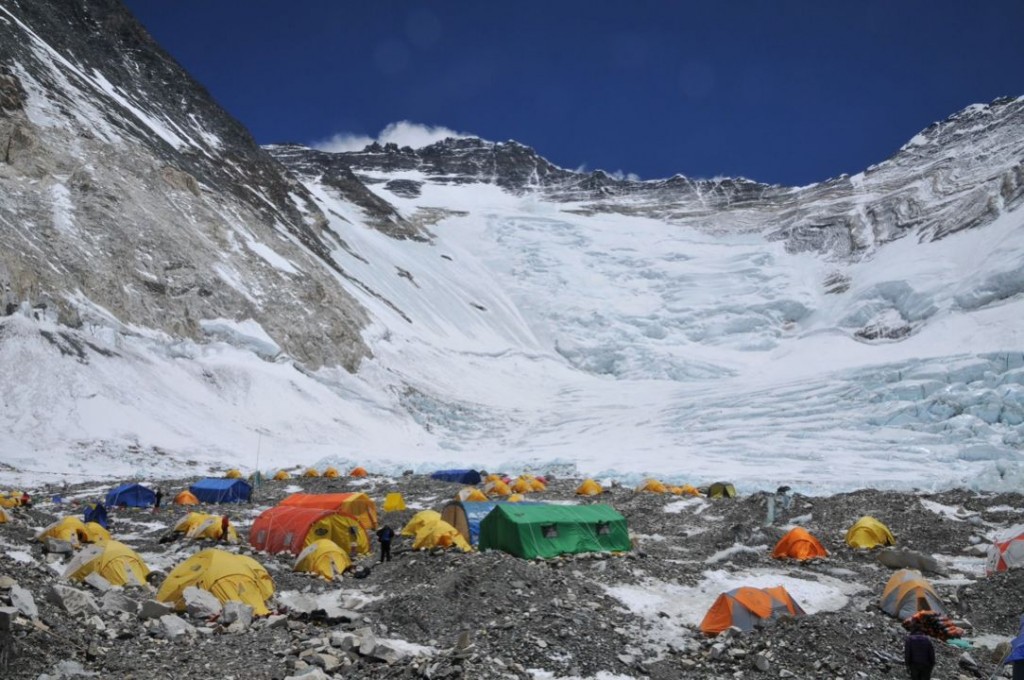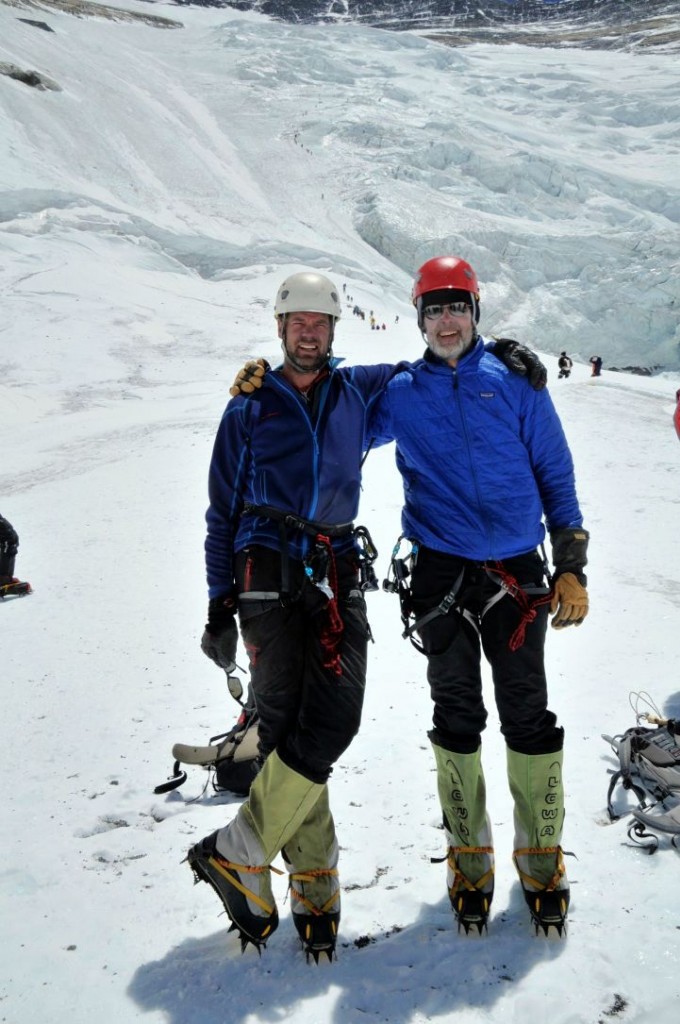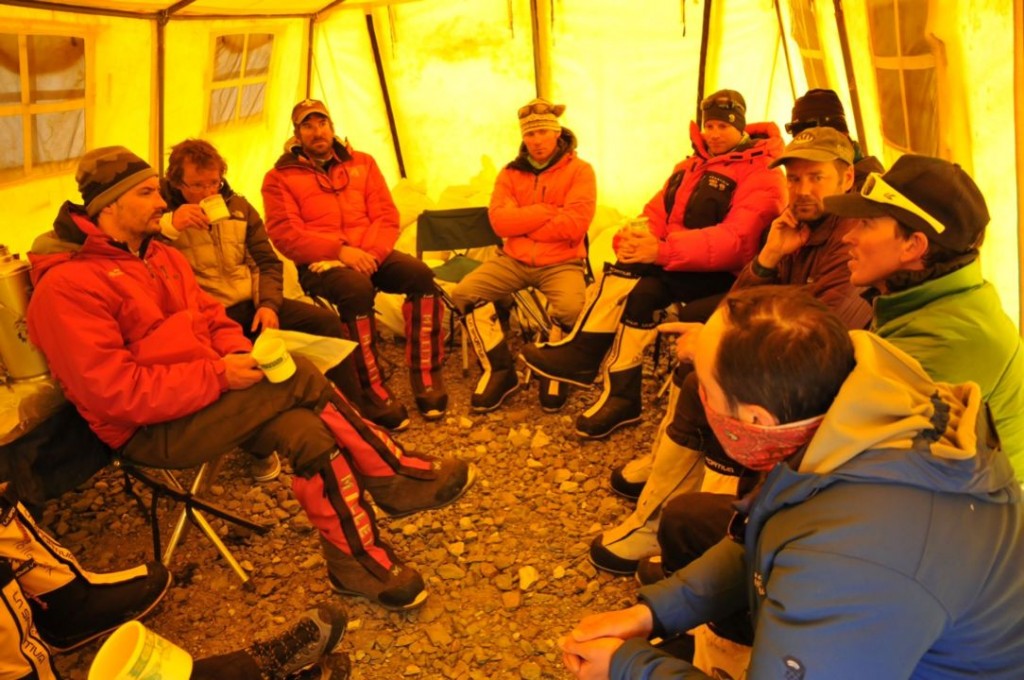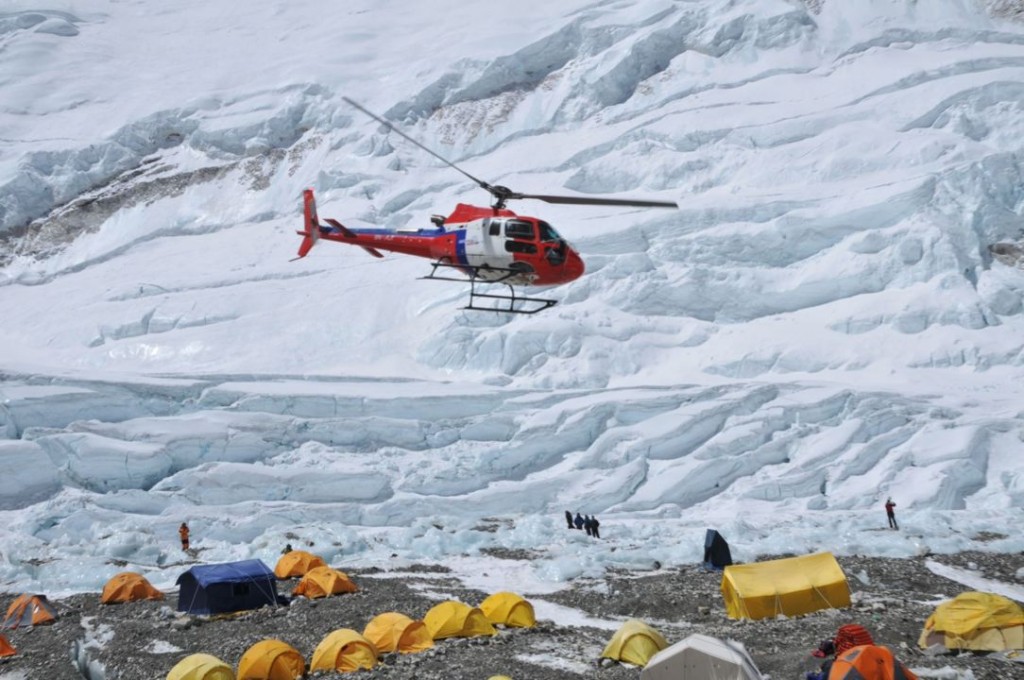
Reuniting with friends, family, and loved ones is an important part of an expedition. From left to right: Fred Simmons, Fred's daughter Carolyn Simmons, and Kurt Wedberg. Carolyn got to witness first hand Fred and Kurt taking care of food cravings at a restaurant in LA!
Our Spring 2012 Everest Expedition is now over. Fred and I managed to get up to the summit and back down in one piece. It was a great life adventure like no other. Like all big expeditions it will take some time for the full magnitude of what we accomplished to sink in. For now we are fortunate enough to be in the position to enjoy every moment of that process. We landed at LAX on May 24. After a nice afternoon nap we worked on our first of many food cravings by getting dinner at a local burger joint called The Counter. These huge burgers are made to order and loaded with mounds of toppings!! This sent us into a satisfying food coma and soon we were back catching up on much needed sleep. Climbing Mt. Everest takes a lot out of a person both physically and mentally. Since we were standing on the summit only a week ago it’s understandable that our bodies are craving much deserved rest and a replenishment of calories!!
We have been asked a lot about our summit day. For those interested here is a brief synopsis of how the day went:
The summit push took us seven days in total from Base Camp back to Base Camp. We stayed right with our original projected schedule:
May 15: Climb from Base Camp to Camp 2 (6495m/21,309′)
May 16: Rest at C2
May 17: Climb from C2 to C3 (7406m/24,300′)
May 18: Climb from C3 to C4 (7955m/26,100′)
May 19: Summit Day, return to C4
May 20: Descend from C4 to C2
May 21: Descend from C2 to Base Camp
After resting at C2 on the 16th it was time to move up to C3. This begins the summit push in earnest. As one moves into this rarified air the human body takes a toll. If weather forced us to retreat it would take several days for us to recover sufficiently to try again. We left C2 at 4:30am. The route took us up the Lhotse Face, which is about 30-45 degrees in steepness. Our goal was to get high on this face en route to C3 before the sun hit us. Upon arriving at C3 we slept on oxygen overnight. This gave our bodies a chance to recover. On May 18 we woke early and began the climb to C4 at 7am. Our route continued up the Lhotse Face then crossed left through the yellow band of shale. After ascending the yellow band we traversed onto a rock promontory known as the Geneva Spur. Topping out on the Spur the route then leveled off as it headed to the South Col where C4 is located.
After arriving at C4 at 1pm our goal was to relax and prepare for our summit push. We relaxed on oxygen and made sure our rucksacks were packed. We were planning to get an early start so every bit of rest we could get now would be important. In the rarified air at C4 everything we did was a chore. Although we had burned lots of calories and were hungry the act of digesting food was extremely difficult. We did our best to hydrate and eat food though, which would be critical for our climb.
At 7:30pm we started getting ready. We put on our climbing harnesses, boots, and crampons while wearing headlamps. We shouldered our rucksacks each filled with an oxygen bottle and at 8:15pm we began our ascent. Weather was cold with a steady wind blowing 20-30mph. Many other headlamps could be seen ahead of us on the route. Soon we were attaching ourselves to the fixed line that was anchored the previous day by an advance team of Sherpa’s and we settled into a rhythm of 3-4 deep breaths for each step we took up hill.
With no moon we had a blanket of stars above us but were aided very little in the way of light. The beams of our headlamps illuminated our path a few feet in front of us, which proved enough for what we needed to see. The terrain was mixed snow and rock angling at a steady 30-40 degrees.
After several hours of steady climbing we found ourselves topping out at a feature known as the Balcony. Here we changed out our partially used oxygen bottles for fresh cylinders. Wind speeds had picked up and we found ourselves covering our faces from the 40mph steady breeze that occasionally gusted to 50mph. At 2am we shouldered our rucksacks once again and continued our ascent. The route follows a ridgeline with steep drop offs on either side. This leads to some rocky steps that have to be surmounted while wearing heavy gloves and crampons strapped to our boots. Trying to keep a steady rhythm we maintained a solid 4-5 breaths for each step. After 3 hours of climbing we found ourselves high up on Everest as light began to illuminate the eastern sky. Above us was the South Summit of Everest. Once we gained the South Summit the route descends slightly then follows a ridgeline to the actual summit.
It was right about this time that one of Fred’s crampons broke. A piece had come off that held the front and back halves of the frame together. Without this piece the crampon was rendered useless. We stopped at an anchor point for our fixed line and examined the frame. There was some older line still present from a previous year. We took out a knife and cut some strands of this rope. We then used these strands to attempt to tie the two halves of the crampon frame back together. If it worked then Fred should be able to climb OK. If not, I decided to give one of my crampons to Fred and have him continue on to the summit with our Sherpa Kancha Nuru. I would then wait for their return. Thankfully the rope held the frame in place and we continued on to the South Summit.
At the South Summit we made one more change in Fred’s oxygen. At a standard flow rate of 3 liters per minute two oxygen bottles is enough to get up and down Everest assuming no unnecessary delays occur. With a third bottle Fred was able to kick that up to a 5 liter flow. This proved especially helpful on such a cold day. Armed with a fresh bottle for Fred we continued on towards the summit of Everest. The terrain gets more rocky in this area and eventually leads to the Hillary Step, the crux of the climb. It is not difficult but it is about 40 feet of hands over feet rock climbing with sheer drop offs in both directions. Clipping in to a new fixed line we climbed up and surmounted the Hillary Step one at a time. Above the step the terrain turns into a gradual ridgeline leading to the summit.
After over 12 hours of climbing including a few delays along the way there was no higher point to climb. Two months of hard work and effort had culminated in us reaching the highest point on our planet!!
Now we are back stateside and recovering nicely. We have been tackling our many food cravings one by one. It is a time of reflection and reconnecting with friends, family, and loved ones. Climbing Everest has a way of humbly helping us gain a new rich appreciation for all we have in this world. As we move forward through the coming days and weeks we plan to savor every minute of this process.
One thing we are thankful for is everybody who followed along on this blog and kept us in their thoughts and prayers. It has been a joy to hear from so many of you and we look forward to continuing that process.
All the pictures we took during this expedition are now uploaded on to the SMI Photo Gallery web site. For your viewing pleasure we invite you to look at them here: http://www.kurtwedbergphotography.com/International-Expeditions/Himalayas/Mt-Everest-Spring-2012/23167265_3Zt2mR

May 18: Fred traversing off the Lhotse Face at approximately 25,500'/7772m.

Fred and Kancha Nuru Sherpa topping out on the Geneva Spur at approximately 25,900'/7894m as early afternoon snow flurries blow through.

Camp 4 at the South Col 7955m/26,100'.

Mt. Everest's South Summit is the highest point on the skyline. The actual summit sits behind the South Summit.

Fred and Kancha Nuru geared up and ready to begin the ascent to the summit.

May 19, 2012 9am: Summit Success!! Fred and Kurt on the top of Mt. Everest!!





